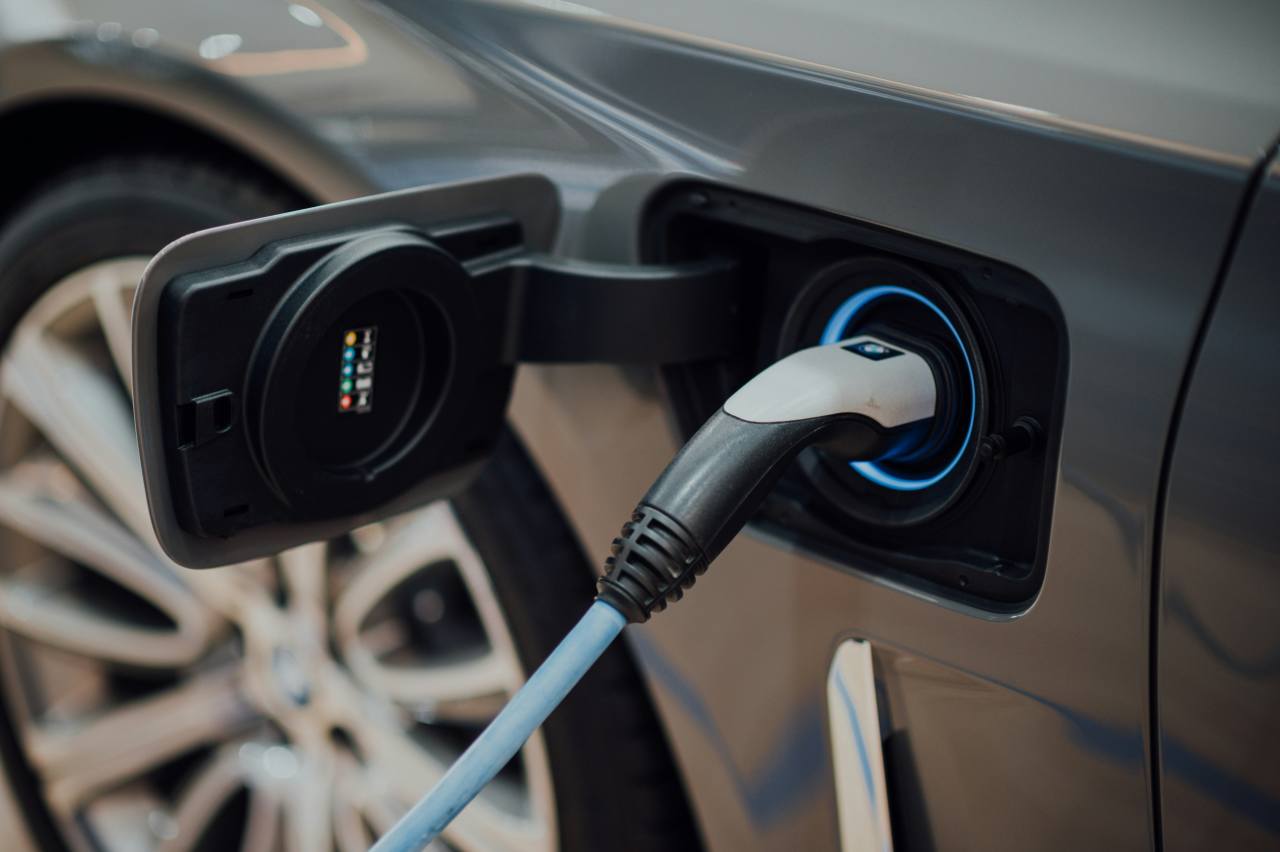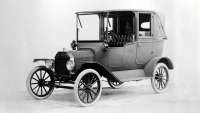As the world moves away from purely internal combustion engined (ICE) vehicles thanks to strict regulations in various parts of the world and widespread awareness of the need to decarbonise the transport sector, multiple types of electrified solutions have popped up.
While you might know a little bit about purely electric vehicles (EVs) thanks in large part to the surge in popularity of Tesla’s Model 3, it’s easy to be confused by the plethora of terms used to describe other forms of electrified vehicles on the market.
If you’re struggling to understand what the difference between a MHEV, PHEV, or a FCEV is, you’re not alone, so we’ve compiled this guide to electrified vehicle types to help declutter these meanings, as well as what a bunch of other industry jargon like ‘48-volt’, ‘range-extender’, or ‘Type 2 CCS’ all means.
1. Electric vehicle (EV)
Also known and referred to as a battery electric vehicle (BEV), purely electric vehicles drive the wheels via one or more electric motors, and use a high-voltage battery pack to store the required energy.
These cars have a few things which separate them from each other. For example, you can have 400-volt or 800-volt batteries (which allows them to charge or discharge faster), a variety of different battery chemistries which can have an impact on their range, charging ability, and effect on their environment when it comes to manufacturing, as well as a choice of different charging ports - the main two being a Type 2 CCS or a CHAdeMO. Read more about those here.
.jpg)
Battery size and efficiency largely determines the available range, although any increase in battery size often has a large impact on price. As can the location and battery chemistry chosen. The ‘holy grail’ for electric vehicle price is the evolution into solid state batteries, which are said to be more power dense, and theoretically much cheaper in the long run.
Popular EV models on the market in 2023 include the BYD Atto 3, Tesla Model 3 and Volvo XC40.
2. Plug-in Hybrid Electric Vehicle (PHEV)
While EVs are straightforward in the way they work, PHEVs are decidedly more complex, as they have a combustion engine alongside an electric motor and a battery.
The advantage of a PHEV is the ability to drive using combustion power, effectively doing away with ‘range-anxiety’ which EVs are plagued with, while also offering a limited electric range for owners to benefit from cheaper, zero emissions commuting.
The downside is that plug-in hybrid models are expensive as they need both sets of components, and they can be compromised when it comes to internal space or towing capacity due to the need for batteries and the extra weight that comes with them.
.jpg)
To make the most of a plug-in hybrid, though, you need to charge it, which is where the ‘plug-in’ bit of plug-in hybrid comes from.
Usually they have small batteries (under 20kWh) good for purely electric driving ranges of 100km or less, although longer range options are hitting the market as batteries become more affordable.
You should also know that plug-in hybrids work in diverse ways, which will heavily impact the way they drive.
.jpg)
Some plug-in hybrids use an electrified version of a regular transmission to drive one set of wheels. For example, the Kia Sorento PHEV which uses an electrified dual-clutch automatic to drive the front wheels only.
Others use a blended system, like the Mitsubishi Outlander, which features a special hybrid transaxle which can only drive the wheels via the most efficient method depending on the speed of the vehicle.
Some even divide the drive system by axle. The Volvo XC60 PHEV, for example, only drives the rear axle with an electric motor, or the front axle with the combustion engine.
3. Range Extender hybrid Electric Vehicle (REX or REEV)
Range extenders, most often referred to as REX vehicles, are generally a type of plug-in hybrid.
Range extenders are purely electrically-driven vehicles which use a combustion engine as a generator.
The combustion components have no mechanical attachment to the wheels to cut down on complexity, weight, and the size of the required engine.
.jpg)
The most notable range extender model sold in Australia was the BMW i3, although Mazda is looking to re-enter the range-extender space with a version of the MX-30 in the future.
Range extenders typically have smaller batteries, as the engine as a generator instead makes up for their lack of purely electric driving range.
Nissan’s ‘e-Power’ hybrids use a similar layout to a range extender, as they only drive the wheels via electric motors, using the engine to generate extra power, although as they have hybrid-sized batteries and cannot be plugged in, they are instead a type of hybrid, and not technically a range extender.
4. Fuel Cell Electric Vehicle (FCEV)
Fuel cell electric vehicles also drive the wheels exclusively via electric motors, but they trade the engine and large battery present in an EV or a PHEV for a hydrogen fuel cell.
To add to the confusion, this EV type is known by a variety of different names - hydrogen fuel cell cars, hydrogen cars, fuel cell cars, but the way they work stays the same.
The hydrogen fuel cell is a clever piece of science. It functions as a big honeycomb filter, known as the ‘membrane’ which is made of an alloy material which can easily carry an electrical current.
Inside, air from the outside and hydrogen fuel is passed on either side of the membrane, and the difference in charge between them causes ions to cross and create an electric current.

The current is then used to drive the electric motors. Regen braking is able to be stored in a small hybrid-sized battery, giving the car a means to be even more energy efficient. The only emission from the reaction is pure water, which drips out a tailpipe.
The advantage of hydrogen fuel cell vehicles is that the fuel cell stack is roughly the same size and weight as a combustion engine, while the fuel itself is extremely weight efficient.
For example, just 6.33kg of hydrogen is required in the Hyundai Nexo allowing a 666km driving range. Refuelling time is also similar to that of a combustion vehicle, right now.
In other words, fuel cell electric technology is an ideal replacement for diesel, and is well suited to heavier vehicles which require large payloads and speedy refuelling times like trucks and buses.
.jpg)
However, it faces other challenges. Infrastructure cost is the main one, with hydrogen fuel requiring on-site compression and refrigeration in order to make it suitable to be put in a vehicle.
The fuel itself is also difficult and costly to generate, and will require major commitment from the government and energy sector to make it a reality.
As it is, the only two production vehicles using hydrogen fuel cell systems are the Hyundai Nexo SUV and Toyota Mirai sedan.
Overseas, several brands, including Hyundai, Hino, Isuzu and others are experimenting with hydrogen fuel cell trucks.
5. Hybrid Electric Vehicles (HEV)
The most popular kind of electric vehicle is the humble hybrid electric vehicle (HEV) which is often also referred to as a self-charging hybrid or a plugless hybrid.
The core principle is similar to a plug-in hybrid, with HEVs packing a combustion engine and at least one electric motor, but with a smaller battery and a heavier dependence on the engine to pick up the slack.
As HEVs cannot be plugged in, the energy to power the EV drive components is generated either by the combustion engine’s idle time, or via regenerative braking.
Many hybrid electrics have engines which run an alternate combustion cycle known as the Atkinson cycle, which essentially improves efficiency at the cost of outright power.
.jpg)
This means energy generated by the engine is always more fuel efficient, regardless of whether it is powering the wheels, or being stored in the battery.
The car makes up for the lack of engine performance by boosting outputs temporarily with its electric motor.
Hybrids are easy to use and can cut your fuel bill in half at a very small additional upfront cost compared to a combustion vehicle, but unlike PHEVs or EVs, they can never be truly zero-emissions vehicles.
Hybrid electrics can work in a variety of ways. The most popular hybrid - Toyota’s ‘Hybrid Synergy Drive’ uses a clever hybrid transaxle with two fixed gears and two electric motors to seamlessly blend the two drive types.
.jpg)
Others use a more traditional transmission with an electric motor attached. Hyundai and Kia use an electrified dual-clutch automatic, while Subaru uses an electrified CVT (Continuously Variable Transmission).
Nissan’s e-Power tech shakes up the space by driving the wheels only via electric motors, using the combustion engine purely as a generator, in a similar layout to a range extender, but with a smaller battery.
Popular hybrid models include the Haval Jolion, Kia Niro and Nissan X-Trail, as well as the Subaru XV and Forester and Toyota Camry, RAV4, and Corolla.
6. Mild Hybrid Electric Vehicles (MHEV)
In order to trim emissions in the environmentally strict European market and cash in on the wave of hybrid popularity, many manufacturers are turning to mild hybrid technology.
This is abbreviated as MHEV, but many automakers will label these vehicles as ‘hybrids’ despite the fact the technology often has a modest impact on fuel consumption.
In almost all cases, what separates a ‘mild hybrid’ from a ‘hybrid electric vehicle’ is the lack of any electric power going to the wheels.
Mild hybrids are combustion vehicles with some form of higher-voltage electric system which is incapable of driving the wheels under its own power.

Many MHEVs use a 48-volt motor/generator in place of an alternator (sometimes referred to as an integrated starter generator or ISG) which can take an electrical burden off the combustion engine, or even offer a small boost in some situations.
The system can be used to boost or smooth out stop/start technology, allowing the engine to remain off for longer in traffic or when decelerating.
Some cars even have a tiny hybrid battery which can store a small amount of regenerated energy in order to continue to power high-voltage systems while the car’s combustion engine remains off.
It can become more complicated than that, with some Mercedes-Benz models having electrical assist to some components, like the C43 AMG which uses an electric motor inside its turbocharger to act as an anti-lag device.
.jpg)
Generally, though, MHEVs serve to slightly reduce fuel consumption (some brands say by up to 15 per cent) and most importantly, reduce emissions by keeping the engine off for longer, allowing existing combustion technology to continue to pass strict Euro emissions standards.
To confuse matters slightly, mild hybrids can also be called power-assist hybrids, battery-assisted hybrid vehicles or BAHVs variously, depending on the brand.
Popular MHEVs include the Audi Q5, Mazda MX-30 and Mercedes-Benz C-Class.




.jpg)
.jpg)
.jpg)


.jpg)

.jpg)
 copy.jpg)
.jpg)

.jpg)
.jpg)
.jpg)


.jpg)
.jpg)



.jpg)


Comments